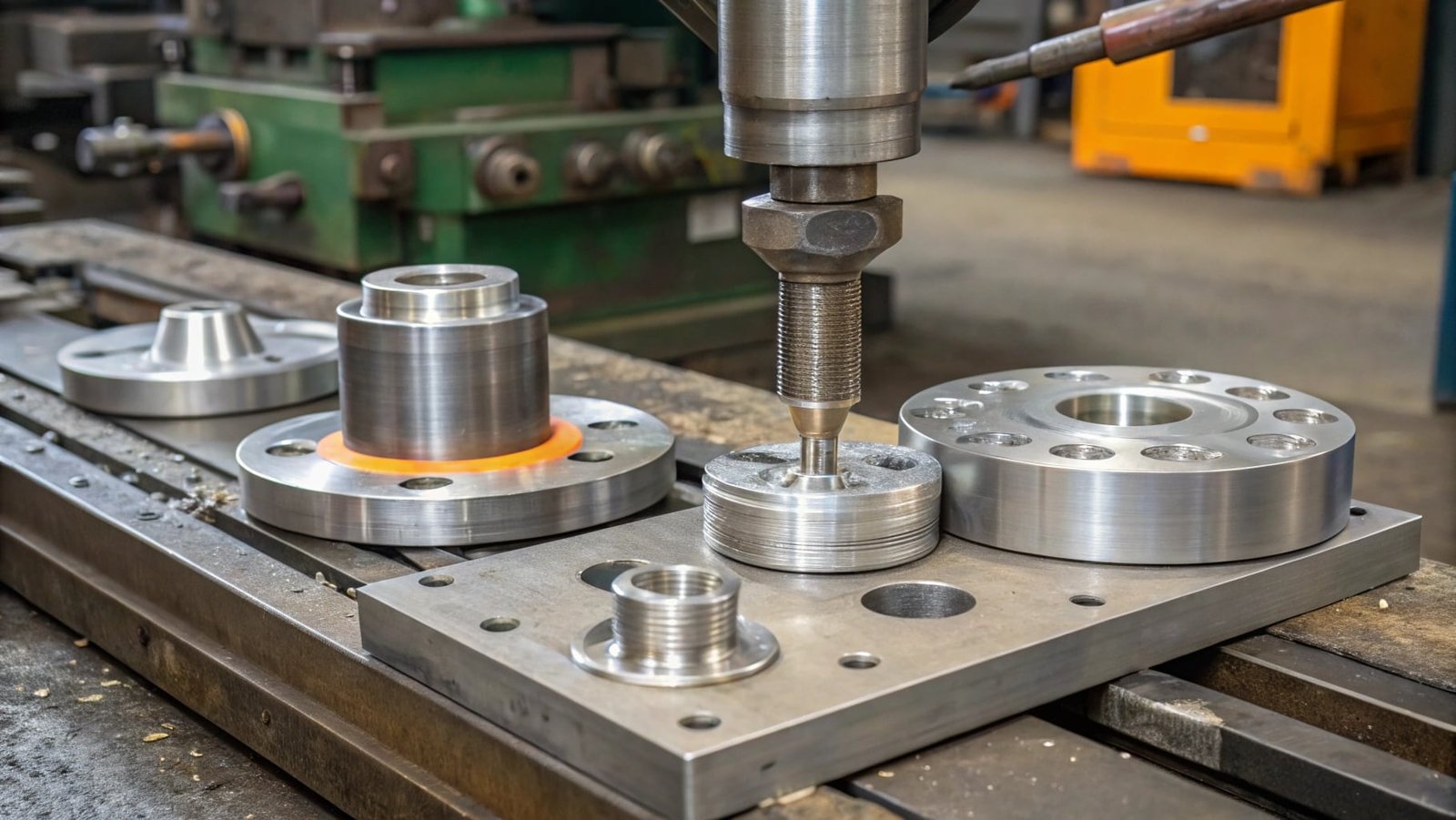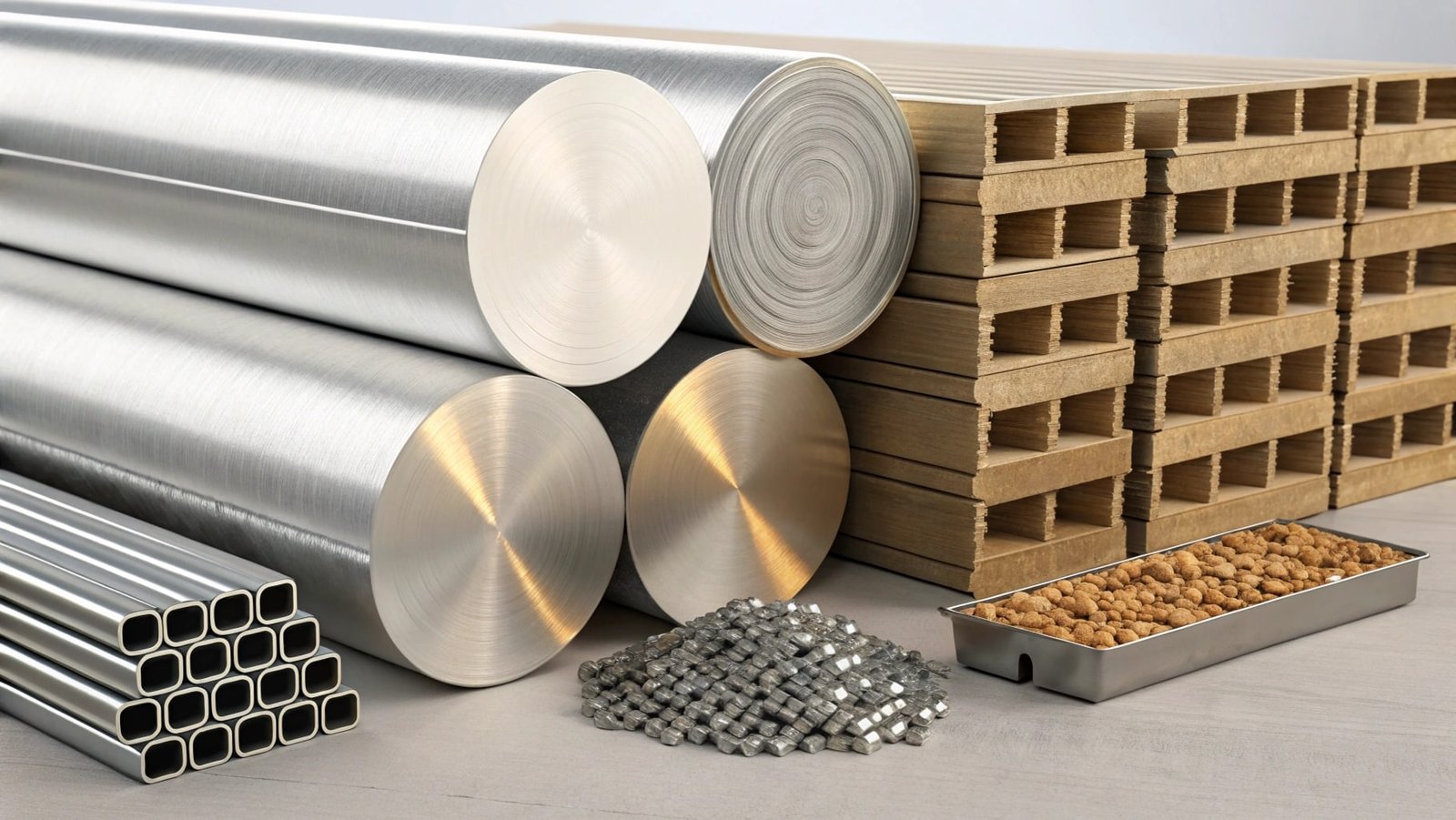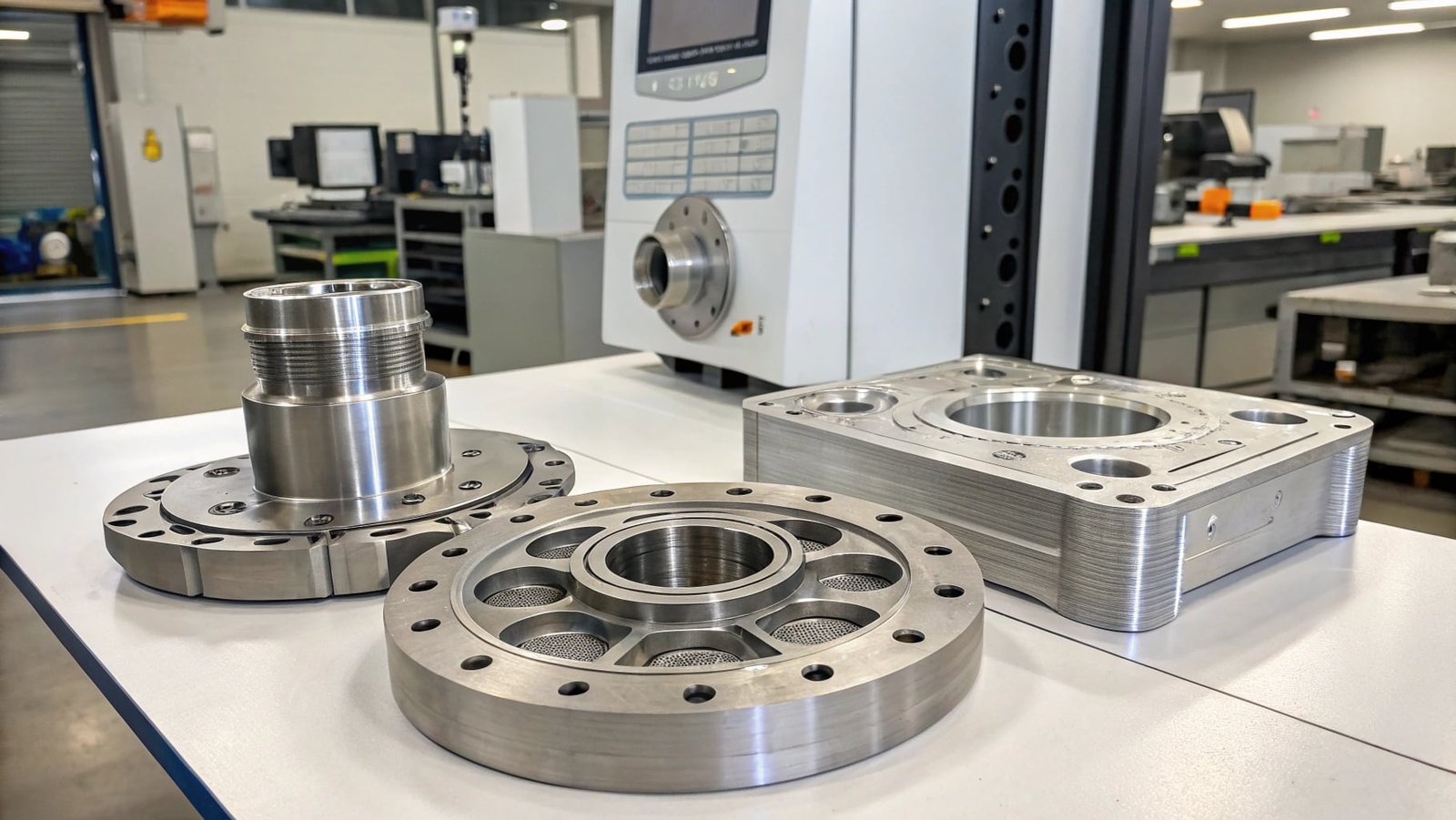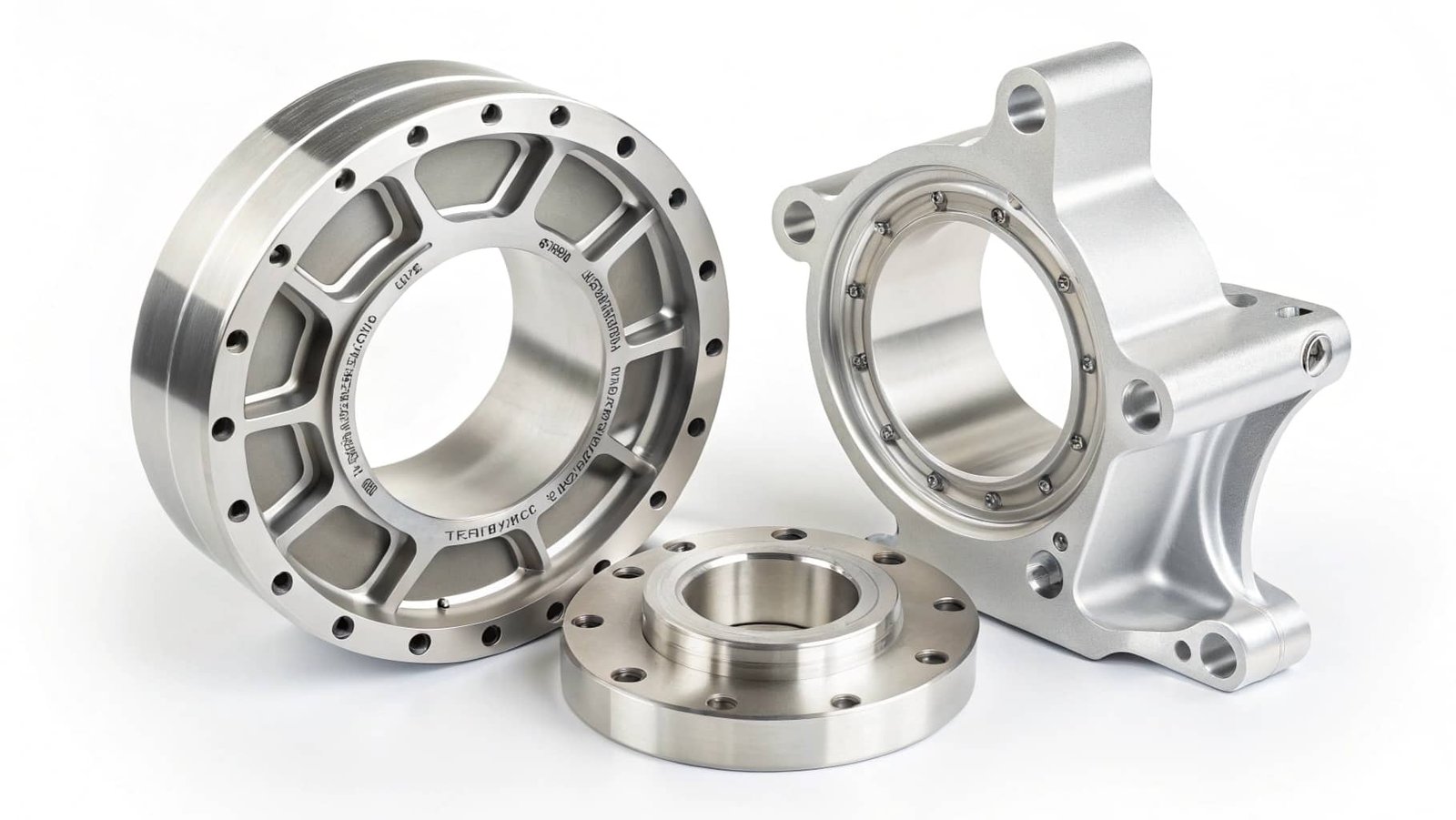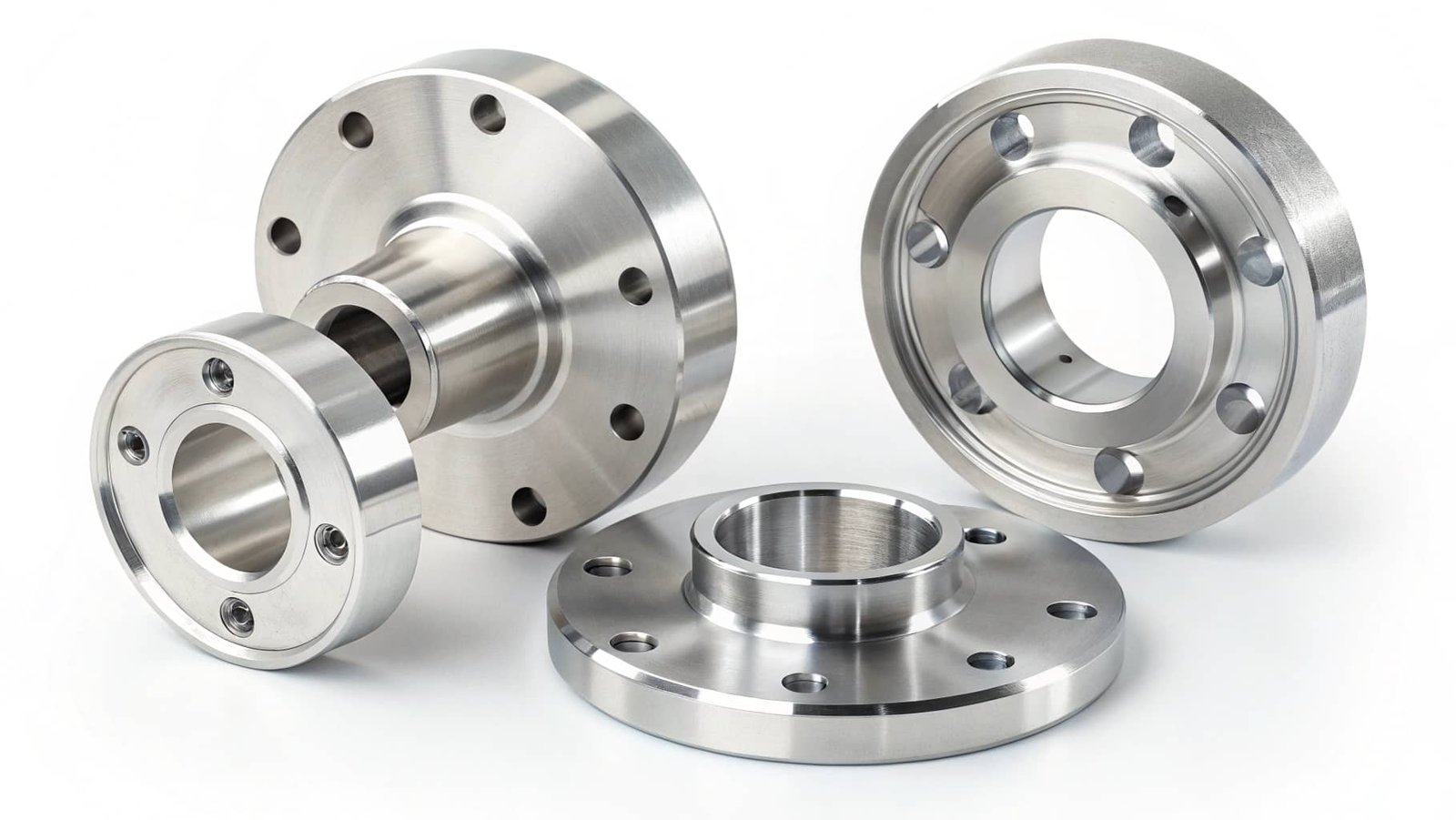Confused about which aluminum forging method to choose? Let us break down the precision of closed die and the flexibility of open die forging for you.
Closed die forging offers high precision and repeatability for complex parts, while open die forging provides flexibility for large, custom, or simpler shapes, each process having distinct advantages and applications in aluminum component manufacturing.
At SWA Forging, we frequently help clients navigate the choices between different forging methods. Understanding the core differences between closed die and open die forging1 is key to selecting the process that best meets your aluminum component's specific requirements, balancing precision, flexibility, cost, and production volume.
What is the difference between open die and closed die forging?
The fundamental difference lies in how the metal is shaped and contained during the forging process.
The primary difference between open die and closed die forging is that open die forging uses simple flat or slightly shaped dies with the workpiece shaped by repeated blows and manipulation, whereas closed die forging uses precisely shaped dies that fully enclose the workpiece to form complex shapes in fewer operations.
Clients often want a clear understanding of what sets these two main forging methods apart. The distinction is significant and affects everything from the complexity of the parts that can be produced to the tooling costs and production volumes.
Here's a breakdown of the key differences:
- Die Design:
- Open Die: Uses simple dies, often flat or with basic contours, that do not fully enclose the workpiece. The metal is shaped by applying force and moving the workpiece between blows, often with tooling like swages or flat dies.
- Closed Die: Uses custom-made dies with impressions that precisely match the desired final shape of the part. The dies fully enclose the workpiece, forcing the metal to flow into the die cavity.
- Shaping Process:
- Open Die: Involves multiple steps of heating, shaping (drawing out, upsetting, bending), and reheating. It’s a more manual and iterative process, offering greater control over intermediate shapes.
- Closed Die: The workpiece is placed in the lower die cavity, and the upper die descends, forcing the metal into the impression. This typically requires fewer blows and operations to achieve the final shape.
- Part Complexity and Precision:
- Open Die: Best suited for simpler shapes, large components, and parts where exact contours are not critical. It's highly flexible for custom sizes and quantities.
- Closed Die: Ideal for complex shapes, intricate details, and parts requiring high dimensional accuracy and a good surface finish.
- Tooling Costs:
- Open Die: Lower tooling costs due to simpler die designs.
- Closed Die: Higher tooling costs due to the complex, precise nature of the custom dies.
- Production Volume:
- Open Die: More economical for prototypes, small batches, and custom orders.
- Closed Die: Highly efficient for high-volume production runs where the tooling cost can be amortized over many parts.
Understanding these differences helps in selecting the most appropriate forging method for your specific aluminum component needs.
What is precision die forging?
Precision die forging is essentially another term for closed die forging, emphasizing the accuracy and detail achieved through the process.
Precision die forging, commonly referred to as closed die or impression die forging, is a manufacturing process that uses custom-designed dies with intricate cavities to shape metal into complex, highly accurate components with excellent surface finish, often in high volumes.
The term "precision die forging" highlights the key benefit of the closed die method—its ability to produce parts with exceptional accuracy and detail. This precision is what makes it indispensable for many critical applications.
Key aspects of precision die forging include:
- Accuracy and Repeatability: The dies are manufactured to extremely tight tolerances, ensuring that each forged part is an accurate replica of the die impression. This consistency is vital for interchangeable parts.
- Complex Geometry Capability: The process allows for the creation of intricate shapes, including undercuts, ribs, and bosses, which are difficult to achieve with other metal forming methods.
- Material Property Enhancement: Like all forging, it refines the grain structure of the metal, aligning it with the die contours. This leads to superior mechanical properties such as strength, ductility, and fatigue resistance compared to casting or machining.
- Surface Finish: The smooth finish of the dies translates into a good surface finish on the forged part, often reducing or eliminating the need for secondary machining for aesthetic or functional purposes.
- Reduced Machining: Because the part is formed so closely to its final dimensions, the amount of subsequent machining required is often significantly reduced, saving time and cost, especially in high-volume production.
Precision die forging is the method of choice when the highest levels of accuracy and detailed shaping are required for aluminum components.
What are the advantages of closed die forging?
Closed die forging, also known as impression die forging, offers several significant advantages, particularly for components that demand precision and high-volume production.
The advantages of closed die forging2 include its ability to produce parts with complex shapes and intricate details, achieve high dimensional accuracy and superior surface finishes, enhance material strength and ductility through grain refinement, and facilitate efficient high-volume production with consistent quality.
Clients often choose closed die forging for its ability to deliver high-quality, complex parts consistently. The precision and material enhancements it offers are critical for many demanding applications.
Here are the main advantages of closed die forging:
- Complex Part Design: The process allows for the creation of highly intricate shapes and features that are difficult or impossible to achieve with other methods. This includes parts with multiple angles, curves, and specific contours.
- High Dimensional Accuracy and Tolerances: The custom dies are designed to produce parts with very tight tolerances, meaning the dimensions are extremely close to the specified requirements. This minimizes the need for post-forging machining.
- Superior Surface Finish: The smooth, machined surfaces of the dies impart a good surface finish to the forged part, often requiring minimal finishing.
- Enhanced Mechanical Properties: The forging process aligns the metal's grain structure with the shape of the part. This directional grain flow results in superior tensile strength, yield strength, toughness, and fatigue resistance compared to parts made by casting or machining from bar stock.
- Material Efficiency: By shaping the metal precisely, less material is wasted compared to subtractive manufacturing methods like machining.
- High-Volume Production: Once the dies are created, the process is highly efficient for producing large quantities of identical parts with consistent quality, making it cost-effective for mass production.
These advantages make closed die forging a critical process for industries requiring high-performance, precisely formed components.
What is the difference between closed die forging and press forging?
While often used interchangeably, "press forging" can refer to the type of equipment used, while "closed die forging" refers to the method of shaping.
The difference between closed die forging and press forging is that closed die forging describes the method of shaping metal within impression dies, whereas press forging refers to the type of machinery (a press) used to apply the force needed for forging, which can be used for both open die and closed die operations.
Clients sometimes use these terms, and it's helpful to clarify their relationship. Think of it this way: closed die forging is the what (the shaping method), and press forging is the how (the machinery used to apply force).
Here's a more detailed explanation:
- Closed Die Forging: This is a specific manufacturing process where metal is heated and then forced into precisely shaped cavities within two dies (an upper and a lower die). These dies fully enclose the workpiece during deformation. The goal is to achieve a specific shape with high accuracy.
- Press Forging: This term refers to the use of a mechanical or hydraulic press to apply force to the metal. Presses can be used for various forging operations:
- Closed Die Press Forging: This is when a press is used to perform closed die forging. It's very common because presses provide the high, controlled forces needed to push metal into intricate die cavities.
- Open Die Press Forging: Presses can also be used for open die forging, where simple dies are used, and the press applies force to shape the material through multiple operations.
- Other Press Operations: Presses are also used for other metal forming processes like coining, extrusion, and drawing, which may or may not be considered "forging" in the strictest sense.
In summary, you can have closed die forging performed by a press, or you can have open die forging performed by a press. The key distinction is that "closed die" describes the containment and precision of the shaping process, while "press forging" describes the type of machine applying the necessary force.
Conclusion
Choosing between closed die and open die forging at SWA Forging depends on your project's needs: precision and complexity favor closed die, while flexibility and large-scale custom parts lean towards open die. Both methods offer superior material properties compared to casting, but the specific choice hinges on your component's design, volume, and performance requirements.






